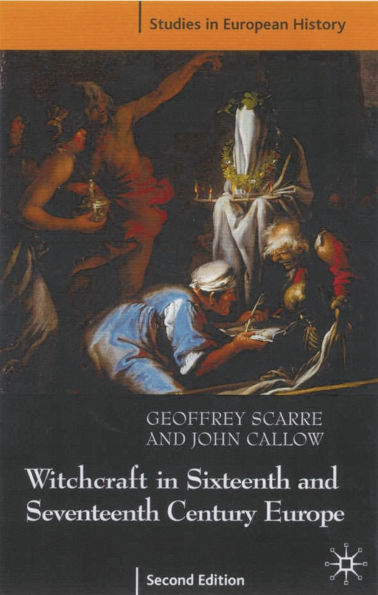Witchcraft and Magic in Sixteenth- and Seventeenth-Century Europe
The figure of the witch still has the ability to exert a powerful fascination on the modern mind. The vision of the elderly crone begging for charity at the crossroads, an object of fear and revulsion for her local community, has combined with the memory of prolonged judicial persecution and oppression to inspire contemporary movements as far removed from each other as Wiccans and women's liberation. In tackling such an emotive issue, where misogyny and violence combine with superstition and the basest of human instincts, Scarre and Callow chart a clear and refreshingly level-headed approach to the subject. Distinguishing between fact and fiction, they set the witch trials firnly back within the context of their own times and, without seeking to exonerate those responsible, demonstrate how it was possible for judiciaries and social elites to believe wholeheartedly in the reality and efficacy of witchcraft as a valid system of belief and as a dangerous threat to the fabric of society in which they lived.
This new edition has been comprehensively updated to take account of the vast expansion in interest and scholarly research that has taken place in the field since the publication of the first edition. This work provides a provocative thesis for those seeking to understand the basis for the politics of persecution and a firm interpretative basis around which further exploratory research may be conducted.
1000285582
This new edition has been comprehensively updated to take account of the vast expansion in interest and scholarly research that has taken place in the field since the publication of the first edition. This work provides a provocative thesis for those seeking to understand the basis for the politics of persecution and a firm interpretative basis around which further exploratory research may be conducted.
Witchcraft and Magic in Sixteenth- and Seventeenth-Century Europe
The figure of the witch still has the ability to exert a powerful fascination on the modern mind. The vision of the elderly crone begging for charity at the crossroads, an object of fear and revulsion for her local community, has combined with the memory of prolonged judicial persecution and oppression to inspire contemporary movements as far removed from each other as Wiccans and women's liberation. In tackling such an emotive issue, where misogyny and violence combine with superstition and the basest of human instincts, Scarre and Callow chart a clear and refreshingly level-headed approach to the subject. Distinguishing between fact and fiction, they set the witch trials firnly back within the context of their own times and, without seeking to exonerate those responsible, demonstrate how it was possible for judiciaries and social elites to believe wholeheartedly in the reality and efficacy of witchcraft as a valid system of belief and as a dangerous threat to the fabric of society in which they lived.
This new edition has been comprehensively updated to take account of the vast expansion in interest and scholarly research that has taken place in the field since the publication of the first edition. This work provides a provocative thesis for those seeking to understand the basis for the politics of persecution and a firm interpretative basis around which further exploratory research may be conducted.
This new edition has been comprehensively updated to take account of the vast expansion in interest and scholarly research that has taken place in the field since the publication of the first edition. This work provides a provocative thesis for those seeking to understand the basis for the politics of persecution and a firm interpretative basis around which further exploratory research may be conducted.
32.35
In Stock
5
1

Witchcraft and Magic in Sixteenth- and Seventeenth-Century Europe
90
Witchcraft and Magic in Sixteenth- and Seventeenth-Century Europe
90
32.35
In Stock

Product Details
| ISBN-13: | 9781350393646 |
|---|---|
| Publisher: | Bloomsbury Publishing |
| Publication date: | 06/29/2001 |
| Series: | Studies in European History |
| Sold by: | Barnes & Noble |
| Format: | eBook |
| Pages: | 90 |
| File size: | 978 KB |
About the Author
What People are Saying About This
From the B&N Reads Blog
